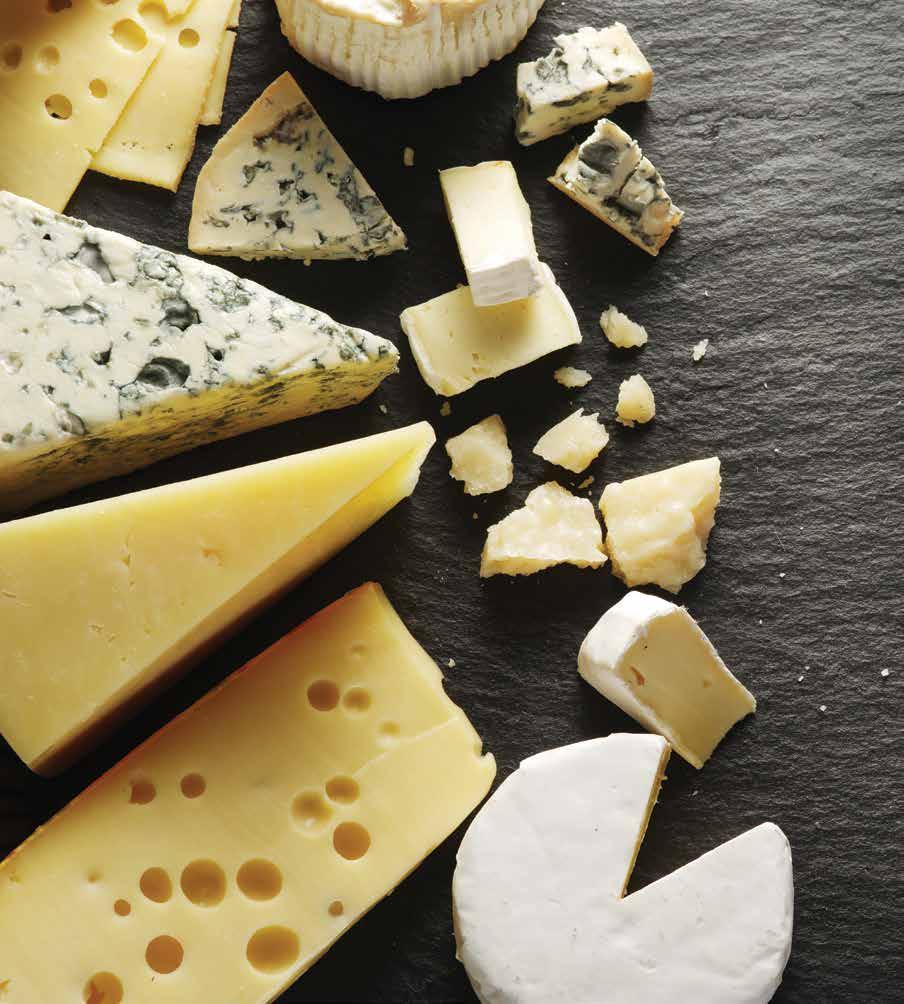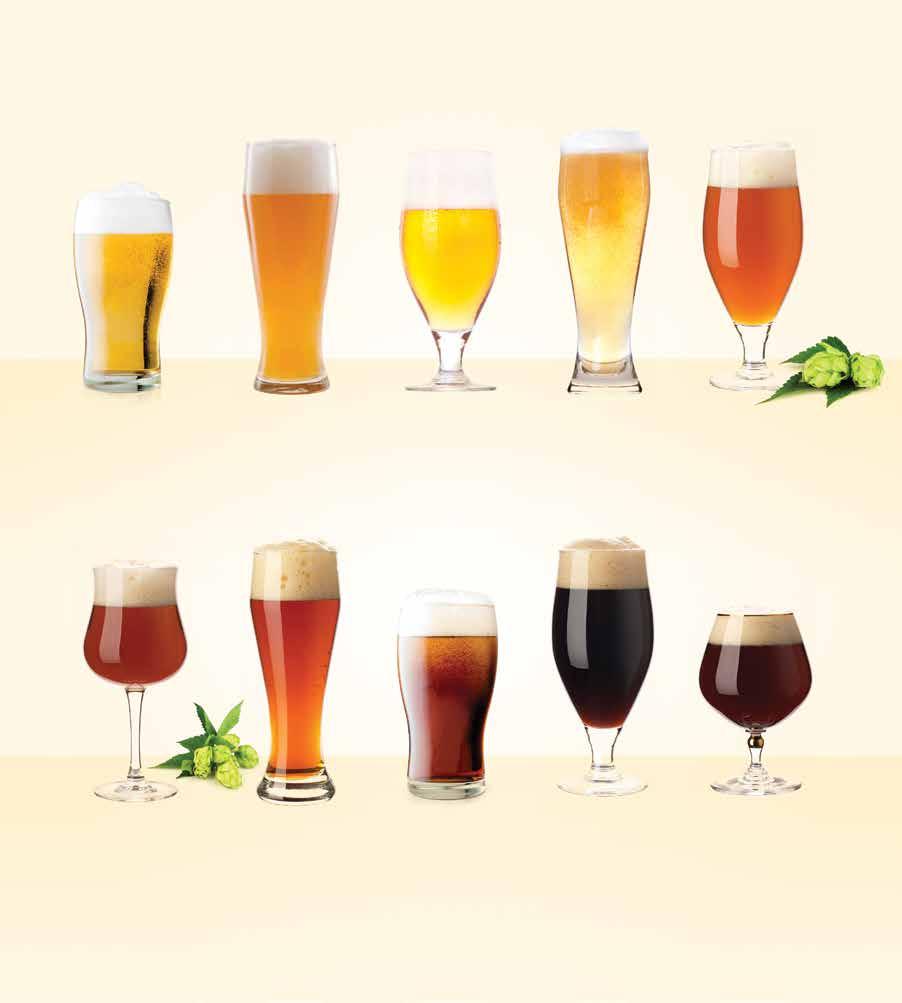
6 minute read
A Cheesy Love Story
from the kitchen ofKate Curci ’11

Kate Curci ’11 grew up in the restaurant industry. Her family founded Bonefish Grill where Curci worked during summer breaks. She is a graduate of the Culinary Institute of America in Hyde Park, N.Y. From there, she worked at a small, fine dining restaurant in Manhattan. Curci returned home to St. Petersburg, Fla., to help open a new restaurant, Noble Crust, in 2014. Curci did it all, from helping build furniture, hiring and training staff, and creating the menu to designing the kitchen. She served as sous chef there until recently while also helping develop another Curci family enterprise, Fat Beet Farm, which is set to open in 2016. Fittingly, Curci is now interning for a year at a goat cheese farm in Oregon. She is also working on a recipe collection of fermented foods and wine.
Favorite Quote: “Tell me what you eat, and I’ll tell you who you are.” - Luciano P avarotti
’ve had a beautiful lifelong love affair with cheese, and instead of eating a pound of manchego and quince paste in one sitting (with disastrous consequences), I prefer a more civilized and seemingly less gluttonous form of consumption. I Curci, right, at work at the Noble Crust, a restaurant she helped create and build.


Macaroni and cheese, arguably the most precious gem that American cuisine has ever produced, shamelessly embraces all the marvelous qualities cheese has to offer: the luxurious creaminess that makes you feel like you’re wrapped in a warm blanket next to a fire, the indulgent richness that (almost) induces guilt, and the sharp tang that keeps you coming back for more. And more. Add to this some perfectly al dente pasta, a hint of spice, some crunch to top it off, and a real star is born.
There is no single “right” way to make it, but there are some guidelines to follow when choosing your ingredients. After many batches, I’ve narrowed it down to four essential components.
The Pasta
When choosing the pasta, there is one rule. It must be short, and it must be hollow. Elbows are classic for this reason; this type of noodle holds the most sauce.
The Cheeses
Infinite combinations would be perfectly delicious, but your cheese choices must accomplish three important things: they must melt smoothly, they must bring some salty/nutty to the party, and they must have some of that sharp tang we were talking about. A few of the best melters are Gruyère, Gouda and Brie. By salty/ nutty, I mean those hard grating cheeses like Parmesan and pecorino. And for sharpness, I always use a little classic, aged cheddar (the older the better).
The Accent
Although using a multitude of cheeses in the sauce will give it complexity and tons of flavor, a little something extra brings the mac from good to great, and sometimes from great to extraordinary. It may be as simple as a pinch of chili flake with a classic yellow cheddar mac, but other times it’s as bold as pancetta, rosemary and figs with Brie and Gruyère; it’s all about complementing the cheese. This little accent is your wild card, so choose according to what you love.
The Crunch
No matter the style, all mac n’ cheese needs some textural love in the form of salty, crunchy crack on top. From buttery breadcrumbs to crumbled potato chips, almost anything goes. However, you must still consider the flavors you’ve assembled; for that yellow cheddar one, maybe chopped crispy bacon; for the Brie and Gruyère with pancetta, rosemary and fig, maybe a thyme and brown butter panko.
Oh, there is a fifth essential, and possibly the most important: MAKE A LOT AND SPREAD THE CHEESY LOVE!
Kate Curci’s Classic Mac Serves about six
6 tablespoons butter, melted
1 / 2
cup flour
Spices (suggestions: black pepper/ nutmeg/chili flake/minced garlic)
4 cups whole milk
12 ounces cheese
1 cup panko breadcrumb
2 tablespoons butter
Chopped herbs and/or grated Parmesan
1 pound pasta
1 / 2
teaspoon salt 1. In a big pot, melt butter over medium heat. Add whatever spices you like, toast them nicely, then whisk in flour. Cook the roux for a minute or two. Whisk in the milk until all the lumps are gone. Bring to a gentle simmer, then turn down to low heat. Cook the sauce over very gentle heat for about half an hour until it thickens. Turn off the heat and whisk in the cheese until completely melted and smooth. Set aside and keep warm.

3. Heat a large pot of salted water to boiling, then cook the pasta accor ding to the package’s instructions for al dente. Drain the pasta, then mix it with all of the sauce while it is still hot. Taste and season with more salt if necessary. 4. Spread into a casserole dish, then top with all the breadcrumbs. Bake for 30 minutes.
5. Scoop yourself up a big bowl and enjoy!
2. Heat the oven to 350 o . Mix the panko with the melted butter and salt. Spread out in a flat layer on a sheet pan and bake until golden brown. Let cool completely, then mix with any herbs, chili flake or Parmesan. Salt to taste and set aside.
BEER AND FOOD— PAIRINGS MADE FOR EACH OTHER

enry Schaefer ’08 is head chef at Choice City Butcher and Deli, a restaurant and butcher shop in Fort Collins, Colo., established in 2004. The restaurant has an impressive beer selection as well, with nearly 40 brews on tap. Breweries from across the country host soldout beerpairing dinners at Choice City, and Schaefer creates the menus. H
Recently, and for the seventh year in a row, Choice City was named the best Colorado restaurant for beer by RateBeer, an independent review of the best beer retailers as judged by its worldwide community of more than 300,000 beer enthusiasts. Schaefer finds pairing beer and food intriguing. “There is a lot of freedom because you can choose to either complement or contrast the beer with the food and flavors,” he says.
Schaefer’s proudest entree is a marinated lamb chop with a dark chocolate, port wine and bleu cheese sauce paired with a porter beer.
He offers his favorite pairing suggestions:
PILSNER, a light floral beer, pairs well with chicken and pork with herbs like sage or rosemary. WHEAT BEER has smooth, buttery notes and pairs with dishes prepared with pork belly, a ribeye or tourtiere (pork meat pie seasoned with clove and cinnamon, a family Christmas recipe).

SAISON is tart and yeasty, and goes well with berries and balsamic vinegar, as well as creamy bleu cheese. LAGER is a simple, easy drinking beer with light hops that pairs especially well with any protein. IPA is hoppy, fresh and citrusy, and tastes great with a pork roast recipe that includes maple syrup and orange juice.
GOLDEN ALE is full bodied and earthy. Pair it with beef prepared with spices such as achiote paste, coriander and cumin. PALE ALE is hoppy with a full body. Pair with both entrees and desserts that have cinnamon and/or nutmeg as ingredients. AMBER ALE, with its smooth, dark, caramel flavors, goes great with sweet glazed ribs and as an ingredient in potato beer-cheese soup. PORTER BEER is dark and tastes of roasted malt. Pair it with smoked cheeses, chicken mole and brownies. IMPERIAL STOUT’S hearty chocolate and coffee undertones pair naturally with desserts that have chocolate and coffee flavors.










